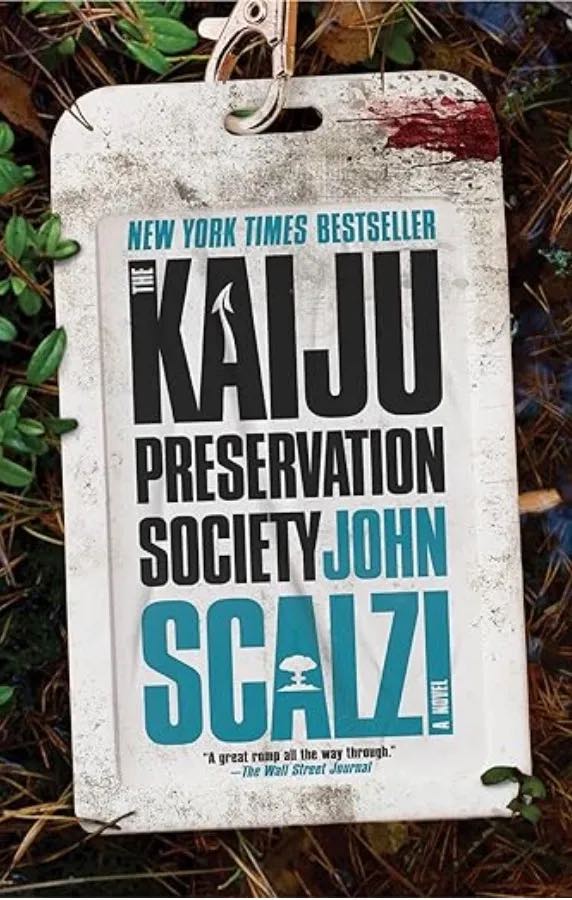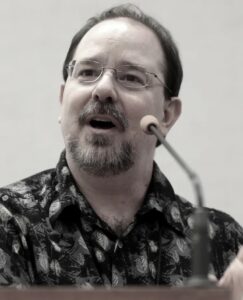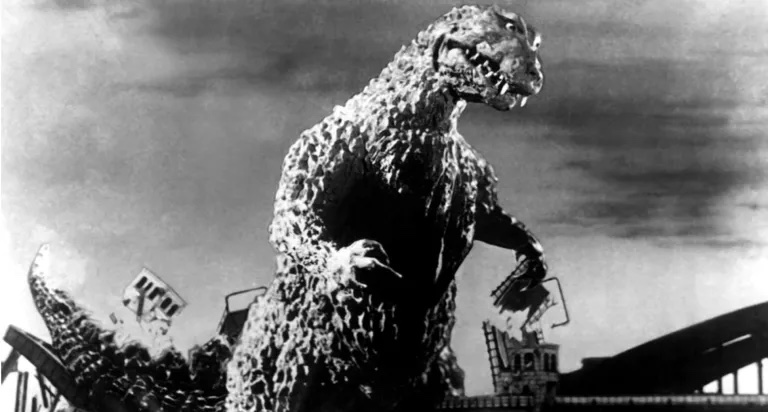Always read the afterword.
John Scalzi has written a another fun book. It almost didn’t happen. It wasn’t on his radar. Rather, he intended to write a more serious, literary, brooding novel. Then, well, 2020. He put that book on hold, perhaps indefinitely, and wrote something fun. Sometimes you don’t want Beethoven’s Fifth, you just want a pop song. He talks about the book’s evolution in the afterword. Read it.
This book is just that, a fun summer pop song of a read.
I’ve read Scalzi before. As a Trekkie, I couldn’t resist picking up his Red Shirts. That book won him the Hugo Award for Best Novel and the Locus Award for Best Science Fiction Novel. I enjoyed that book and this one as well.
The Kaiju Preservation Society (KPS) is a current-day sci-fi. The main characters have suffered through the pandemic and its various lockdowns and mandates. They’re in their 20s and have pretty sharp, biting, wits that make their dialogue fun. They are also wickedly smart.
The tale is a “breach the barrier between the universes” romp. The alternate universe has some very interesting differences, even if the geography is the same. Geography, not geology. Nor some other twists. Fundamental laws seem to map over.
If you’re a fan of the genre, you’ll already know that “kaiju” means “strange beast” in Japanese and refers to the giant monster movies wherein Godzilla and his ilk rain terror down on major metropolitan areas. Sometimes they also fight each other. Radiation is often blamed for their creation.
Scalzi puts a nice spin on that in this book. I listened to the audio version of the book. It’s narrated by Will Wheaton who does a very nice job, even if he does get a little over-exuberant at times. Wheaton has grown professionally from his start as the eminently hate-able Wesley Crusher on Star Trek, The Next Generation.
On the Feral Scale, the story is a 7 – worth the read. The science comes in at a 6, which includes the bonus point for correctly using the term actinide (although actinoid is considered more correct) for the elements with atomic numbers from 89 (Actinium) through 103 (Lawrencium). This group includes all the best elemental names: Uranium, Plutonium, and Einsteinium.
Minor gripes and spoilers follow.
There’s a bit too much hand-waving in terms of science. We learn that the alt-Earth has more oxygen in a thicker atmosphere, is hotter, has no polar ice caps, and is richer in actinides than our Earth. Some of those come with consequences (more O2 in the atmosphere), and contradictions (thicker atmosphere) with no justification. These would impact the aviation scenes – helicopter and dirigible – that take place on the alt-Earth.
Not enough to ruin the book for me. It’s still a good read. I just wanted more detail.
“Literally” is used, abused, and sprinkled liberally throughout the text. An editor should have reined that in somewhat.
Scalzi also uses quite a bit of profanity in the book. If that disturbs you, then steer clear.



